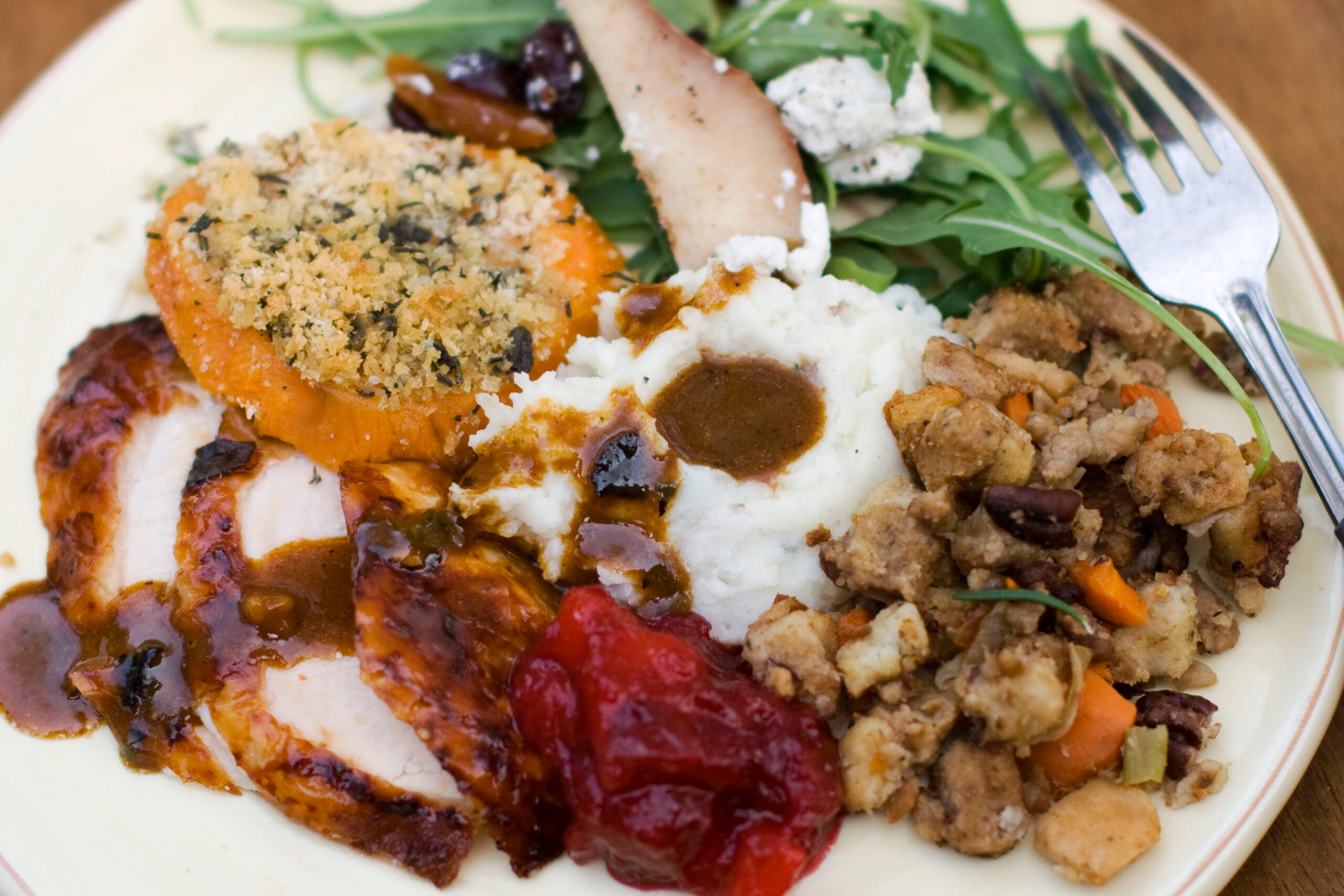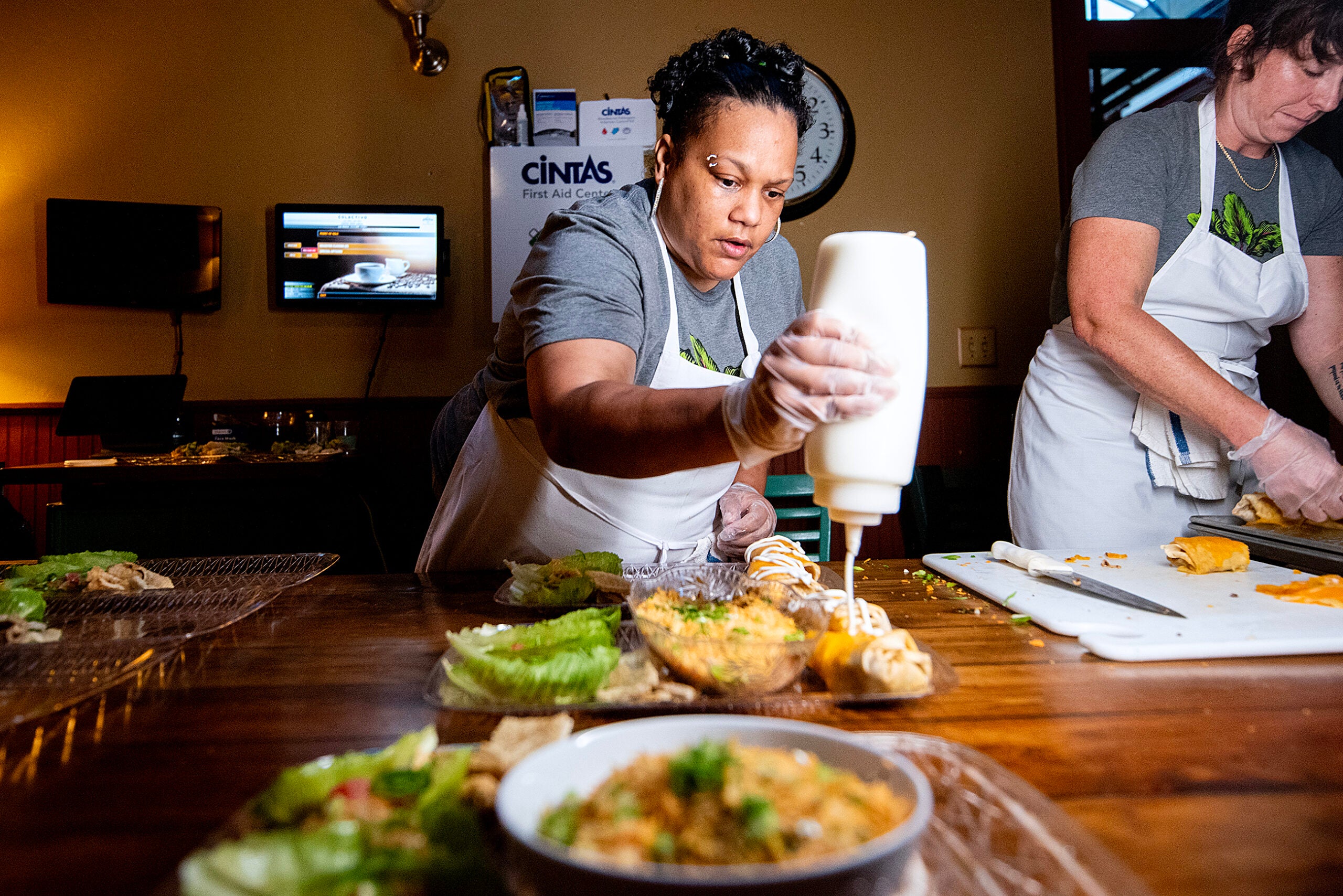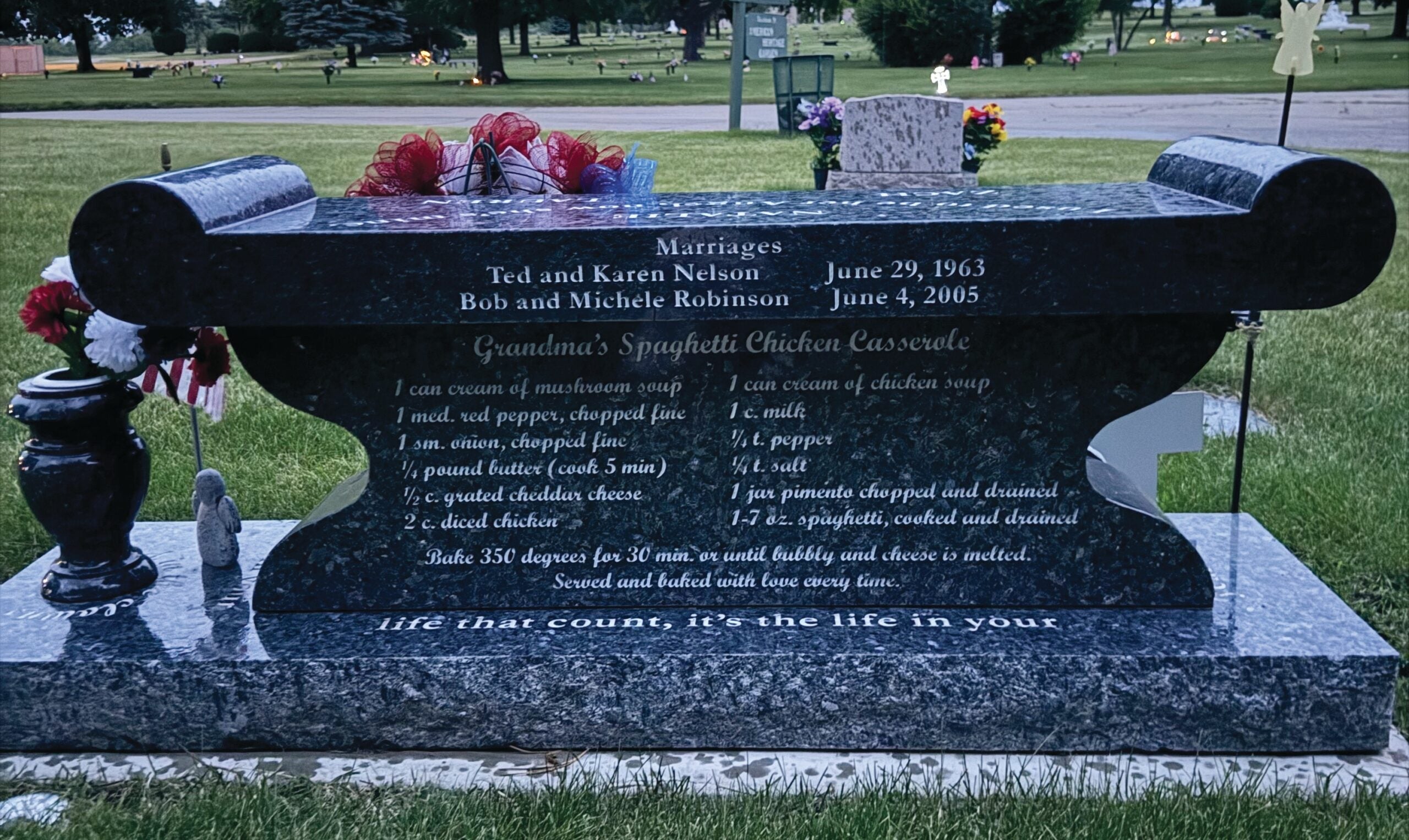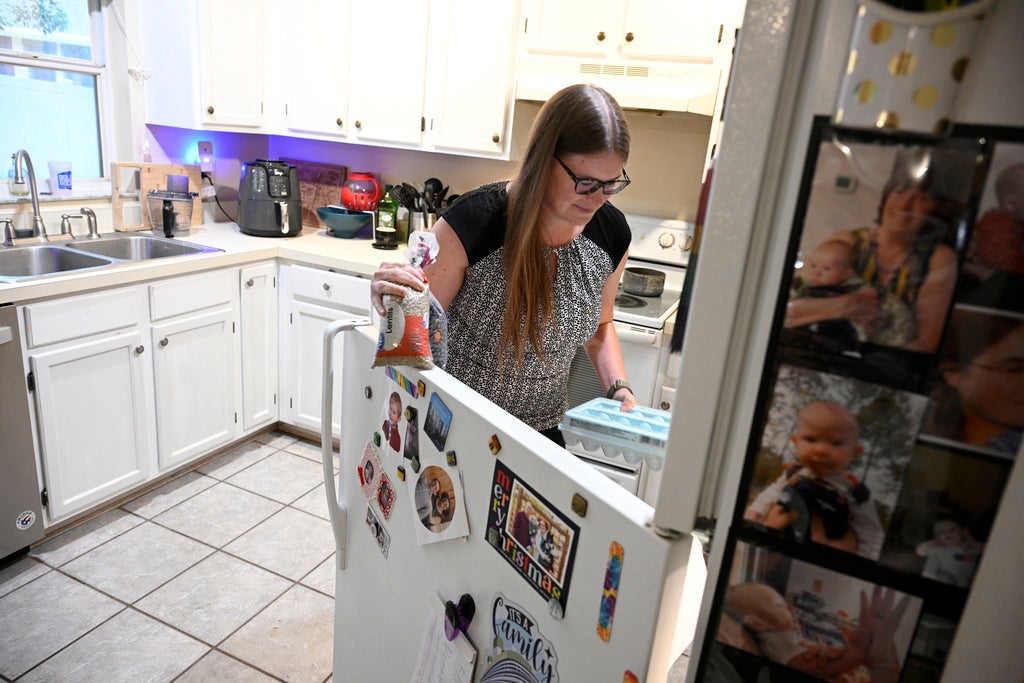Family holiday meals often involve lots of time spent bent over cutting boards, peeking in the oven and reading thermometers or adding juices. High temperatures – and tempers – abound and there’s often a mess left to clean up at the end. As my mother would say, it’s “a big potchke.”
If you find yourself reflecting on how food duties are distributed in your household, you’re not alone.
Recently, Gallup and Cookpad published data from their worldwide survey of trends in home cooking. In every country but one, women cooked more than men, as NPR’s Allison Aubrey reported. Women made on average close to nine meals a week, while men cooked about four in 2022. And that gender gap has widened since the pandemic years of 2020 and 2021.
News with a little more humanity
WPR’s “Wisconsin Today” newsletter keeps you connected to the state you love without feeling overwhelmed. No paywall. No agenda. No corporate filter.
But researchers did identify one country where gentlemen outcook ladies – Italy.
This made us curious about how our readers divide up meal duties at home, and how you resolve tensions if and when they arise. So we asked, and the responses were bountiful.
Here are some of your most memorable responses, edited for length and clarity.
Let the experts shine, no matter their gender
Many people spoke up for the contributions of males in the kitchen. Tichianaa Armah writes that her husband does most of the cooking at home, because – well – he’s better at it.
“When I moved in I would cook, but honestly I like everything perfect and I took too long. He, on the other hand, could whip up a good meal fast, so he might have a bowl of cereal while waiting for my elaborate dinners,” Armah reports.
She adds that she used to spend hours cooking when they had guests, too. “He would come in at the end right before guests arrived and make one dish. Folks would be floored by the one dish he made.” Eventually, she writes, “I threw in the towel. I conceded that while I was a good cook, he was better … So he took over.”
Larry Ragan, a retiree, cooks for himself and his wife of 38 years, who works as a speech therapist. “I love the time in the kitchen, the food prep, creativity, cooking and eating. My wife does agree that ‘most nights’ my meals are very good,” he writes.
Ragan’s wife does not like to cook, he says, “but this is where it gets tricky. She feels guilty when I do the cooking because she believes that should be her role. In my opinion I am the better cook, she’s the better baker (when she does it). Whenever we have these conversations things do not end well,” he adds.
How two men share the kitchen
“I’m in a same-sex couple, so either way it’s a man cooking!” writes Jeffery S. He says in their household, he and his husband both play to their strengths. “My spouse is the better cook and he loves cooking, therefore he cooks the most and I clean the most. That is a fair trade to me because I like having an organized and clean space. Him, not so much.
“He also thinks it’s fair to do the cooking and shopping because I’m the full time worker and main earner of the household. I’m fine with that. I do cook though, only I stick to things I make well, like pizza dough for home pizza night, baked mac & cheese, chicken soup, and grilled burgers,” Jeffery writes.
Mangia, say Italians
Several Italian-American readers wrote in to say that the statistic about men in Italy cooking more than women surprised them not one bit.
“For us Italians, knowing and creating good food is a matter of extreme pride,” writes Gabrielle DiFonzo. “Food is a gigantic part of our culture and heritage… For men, cooking is seen as a manly activity,” she writes. (She sent us this prison scene from Goodfellas as a piece of cultural evidence.)
DiFonzo says cooking was an important part of her relationship with her father. “We loved to visit gourmet food stores together, and he passed down special family recipes to me… like fried eggplant and eggs Florentine. We were so strongly connected by food that after he died, I couldn’t bear to even look at an eggplant for two years,” she writes.
Second generation Italian-American Olivia Box writes that while the women in her family do most of the cooking, “the men cook certain dishes: My nonno made pizza, my cousin preps the entire feast of the seven fishes,” she says.
Box says she spent last year in Italy, and noticed that her male cousins were always cooking and talking about food. “Cooking for Italians is not a chore; it is a part of their identity. With southern Italians moving north for jobs, their foodways have followed. My cousins in their late 20s and 30s cook together with their friends on Sundays, the same dishes their mothers are making simultaneously in their cities far away in the south,” Box writes.
Box encourages more men to learn to cook: “When people say to me that they don’t like to cook, it’s like saying you don’t like to live. Cooking is just a small part of community, gathering, living, slowing down, replenishing, and joy… What a gift.”
Men from the other boot cook, too
A couple of readers in Louisiana wrote that men do a fair share of cooking where they come from. Writing from rural Acadiana, Nicole Poret says she’d love to see a version of the poll taken in Louisiana only.
“A lot of men cook here,” she writes. “There are some dishes that my husband almost always cooks. His gumbo is so full of layers of delicious flavors that I hand that one to him. He is the pancake and French toast maker too. If you toured hunting camps around the state you would find lots of men cooking for groups of other men,” Poret writes.
The gender imbalance can get frustrating
We also heard from women were irked that their male partners don’t prepare more meals.
Emily Kephart, a 41-year-old mother of two, says she enjoyed being in charge of food when it was just her and her husband, but having kids changed the equation. “Now we have two children and two full time jobs and I still do 100% of the grocery shopping and meal planning, and about 75% of the actual cooking/food preparation,” she says.
While other duties are divided pretty fairly, Kephart says, she still gets annoyed with her spouse: “When I’m away or have other plans, more often than not my husband gets the ‘easy’ticket – they order pizza or burritos, or eat some freezer chicken nuggets. Why does he get the free dinner pass?”
Robin Pair has a unique perspective as a woman who’s raised kids both with her ex-husband and her current wife. “When I was married to a man, I essentially did 100% of the planning, shopping, prepping, cooking and serving for all meals; we split the cleaning up pretty much 50/50.Now that I am married to a woman, it’s closer to a 50/50 division of labor for all of it. Having a wife has cut back on the time I spend on chores in general. It’s great,” she writes.
After 25 years of marriage, Kat Zagone writes that she sometimes resents doing most of the cooking. She says she doesn’t expect her husband — who survived grad school on pasta and raw carrots – to take over. Instead “to combat these feelings, I ask him to keep me company in the kitchen while I cook. He happily opens a bottle of wine and we chat about the day.”
And, Zagone notes, her husband does all the dishes.
Dads stepping up
A single father, Jeremy Harvey, reminded us not all families have a mom: “Women cook more than men? Hah! Single dad, boys. Mom left when second son was two months. … I cooked nearly every meal for twenty years. Poll more single dads.”
And Lisa Kulisek from Chicago, says her kids prefer her husband’s cooking. When they met, he couldn’t cook so she taught him some cooking basics. He’s since taught himself more about the science of cooking and embraced it.
“I knew my husband was really becoming a very accomplished cook when our (very picky) children started having sleepovers. I would hear them tell their friends that their dad was a good cook so there would be something nice to eat for dinner.”
Kuliseck hopes more men follow her husband’s lead:”Maybe we just have to encourage the men who are already cooking to do it more often.They might find it a great way to tackle stress (and get to decide what is for dinner) while reducing their partner’s stress and modeling a great skill for their kids.”
9(MDAyMjQ1NTA4MDEyMjU5MTk3OTdlZmMzMQ004))
© Copyright 2025 by NPR. To see more, visit https://www.npr.org.9(MDAyMjQ1NTA4MDEyMjU5MTk3OTdlZmMzMQ004))







